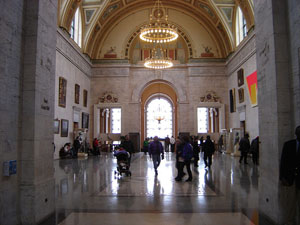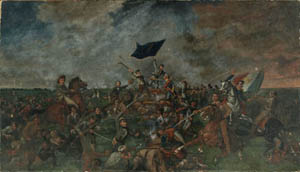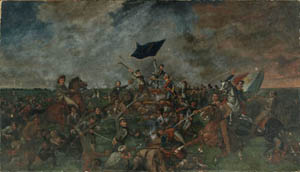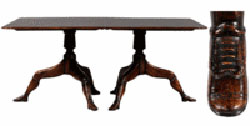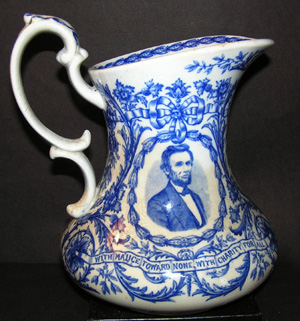
WEST PALM BEACH, Fla. – After a cold front with rain rolled through South Florida, the weather for the Nov. 5-7, the West Palm Beach Antiques Festival was perfect with sunshine and highs in the low 70s. The show was sold out of inside dealer spaces and over 50 dealers basked outside in the semitropical climate.
Another early buyers record was set, and they came early to buy, especially silver and gold with precious metal prices spiking in the last few weeks. Festival owners Kay and Bill Puchstein reported buyers returning day after day and carting off loads of silver and gold. Gold was doing especially well.
Other categories benefited from the buying mood with decorator pieces, holiday items including Christmas pieces, quality oil paintings (both listed artists and Highwaymen), and Modernism furniture and accessories making for brisk commerce.
The Puchsteins reported that dozens of dealers are showing up at the West Palm Beach Antiques Festival for the first time in years and are bringing fresh merchandise with them to South Florida. Attendance was strong, only a few hundred short of the record. The upcoming Dec. 3-5 festival is nearly sold out of dealer spaces, and dealers are signing up for the remainder of the winter shows.
Family partnerships are nothing new in the antiques and collectibles business, but the West Palm Beach Antiques Festival is fortunate to have one of the power teams of the trade as regular dealers. Matthew’s Antiques & Collectibles features the mother/son team of Susan and Matthew Muchnikoff. Susan has been in the business over 40 years and Matthew did his first show at age 15. Their accumulated knowledge base is impressive and they are willing to freely share it with visitors to their booth.
The Muchnikoffs specialize in commemorative items and memorabilia from almost all significant events of the last 200 years and the personalities that drove them. Their inventory ranges from items relating to royalty like Queen Victoria and Queen Elizabeth to political figures like Abraham Lincoln, Theodore Roosevelt and Franklin D. Roosevelt. Then there are artifacts relating to events like the various World’s Fairs including the 1964 World’s Fair, the Columbian Exposition of 1893 and the Crystal Palace Exhibition of 1851 and many more. Matthew and Susan know their inventory and can discuss everything they are selling.
They want to educate not only their customers but also people who are just passing through. Making the booth different each month is a sales technique the Muchnikoffs have used with great success since monthly shows attract many of the same shoppers time after time. The team is diligent about rotating in fresh stock during every show. They maintain a storage facility near the fairgrounds where the show is located and can go to the facility and bring in whatever customers are asking for. They also offer something seldom seen at shows – a layaway plan for the more expensive items. Since they do the West Palm Beach Antiques Festival every month, and have done so for 15 years, customers are assured of the safety of their purchases.
This season, Matthew’s Antiques and Collectibles will be offering British Royalty memorabilia dating to the coronation of King Charles II in 1651. Americana, American political memorabilia and historical commemoratives will cover the full breadth of this country’s history. The centennial celebration of President Ronald Reagan’s birth coincides with the dates for the West Palm Beach Antiques Extravaganza in February Matthew’s Antiques & Collectibles will be ready. They will also offer an interesting array of early American and English pottery and porcelain, transferware, Flow Blue china, fine equestrian, and dog antiques and collectibles.
December 3-5 Festival hours are Friday noon-5 p.m., Saturday 9 a.m.-5 p.m. and Sunday 10 a.m.-4:30 p.m. Early Buyer’s admission is Friday 9 a.m.-noon, and the $25 admission is good for all three days. Adult daily admission is $7, seniors $6. Anyone 12 and under is admitted free. There is no charge for parking at the fairgrounds.
The West Palm Beach Antiques Festival is held at the South Florida Fairgrounds located off Southern Boulevard, 1 1/2 miles west of the Florida Turnpike and 1 mile east of U.S. 441/State Route 7.
For more information contact the West Palm Beach Antiques Festival at (941) 697-7475, email info@wpbaf.com or visit the website at www.wpbaf.com.



